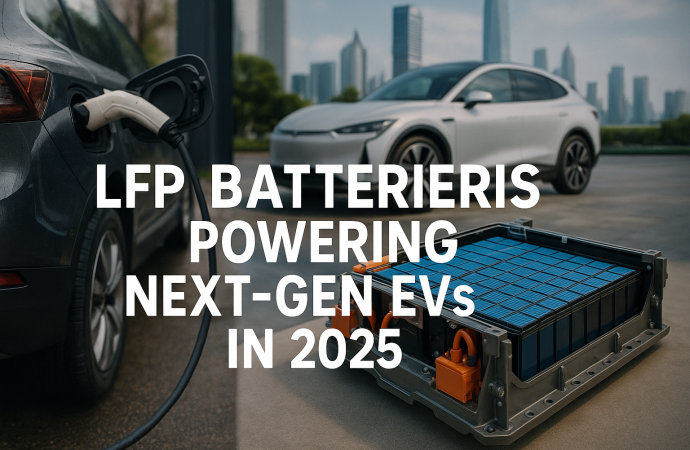Introduction The electric vehicle market is booming in 2025. As more drivers switch to EVs, battery technology faces growing demands for safety, cost, and performance. One type of battery, the lithium iron phosphate—or LFP—cell, is gaining ground. LFP batteries trade some energy density for higher safety and longer life. Automakers and consumers alike are taking
Introduction
The electric vehicle market is booming in 2025. As more drivers switch to EVs, battery technology faces growing demands for safety, cost, and performance. One type of battery, the lithium iron phosphate—or LFP—cell, is gaining ground. LFP batteries trade some energy density for higher safety and longer life. Automakers and consumers alike are taking notice. In this article, we explore what LFP batteries are, why they are powering next-gen EVs, their advantages and challenges, and what the future holds. You will learn how LFP technology is reshaping the EV landscape and what to consider when choosing an EV model in 2025.
What Are LFP Batteries?
Lithium iron phosphate, or LFP, batteries are a type of lithium-ion cell. Instead of nickel or cobalt in the cathode, they use iron phosphate. This change makes LFP cells more stable at high temperatures and less prone to thermal runaway. In simple terms, thermal runaway is a chain reaction that causes batteries to overheat or catch fire. LFP’s iron phosphate cathode prevents this reaction, making these batteries safer by design.
LFP batteries have a slightly lower energy density than nickel-based cells. Energy density measures how much energy a battery can store per unit of weight. Despite this, LFP cells still power many EVs, especially in markets where safety, cost, and longevity matter more than maximum range. In 2025, LFP packs are common in budget-friendly and mid-range EVs. Thanks to improvements in cell chemistry and packing, their real-world range now rivals some nickel-based models.
Why LFP Gains Popularity in EVs
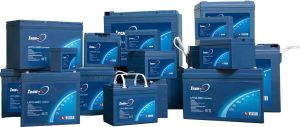
Image by: Yandex.com
Several factors drive the rise of LFP batteries in next-gen EVs. One major factor is cost. Iron and phosphate are abundant and cheap compared to nickel and cobalt. This cost advantage helps automakers offer EVs at lower prices. In a market where price sensitivity remains high, LFP allows more accessible electric driving.
Safety is another key factor. High-profile battery fires have made consumers wary. LFP cells’ intrinsic stability reduces fire risk, building confidence. Fleet operators, like car-sharing services and delivery companies, prefer LFP packs for this reason.
Long cycle life also plays a role. LFP batteries can endure more charge-discharge cycles before capacity falls below 80 percent. Some LFP packs promise over 3,000 cycles, translating to over 1,000,000 miles of driving. This durability appeals to users who keep vehicles for many years.
Finally, supply chain resilience matters. Nickel and cobalt face ethical and geopolitical supply challenges. LFP relies on iron, phosphate, and lithium, which have more stable supply chains. In 2025, automakers aim to secure stable battery supply amid global trade tensions, and LFP offers a dependable path.
Advantages of LFP Batteries
Safety and Thermal Stability
LFP’s iron phosphate cathode resists heat buildup. In tests, LFP cells can withstand direct heat exposure without catching fire. This trait makes them ideal for high-temperature climates and heavy-duty use. Drivers face less risk of roadside battery fires, boosting peace of mind.
Lower Cost per kWh
LFP cells cost up to 20 percent less per kilowatt-hour than nickel-based cells. Lower battery cost directly reduces the EV price. Budget models that once offered just 150 miles of range now achieve 200–250 miles at a price that competes with gasoline cars.
Longer Cycle Life
With more than 3,000 full cycles before significant degradation, LFP batteries outlast many alternatives. This longevity suits ride-hailing fleets and commercial delivery vehicles, where total miles matter more than a slight edge in range.
Environmental and Ethical Benefits
Nickel and cobalt mining raise environmental and human rights concerns. By shifting to iron and phosphate, LFP reduces reliance on conflict minerals. This shift aligns EV makers with growing sustainability demands from consumers and regulators.
Challenges of LFP Batteries
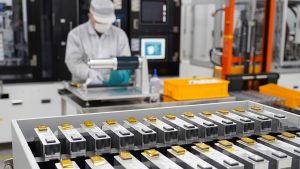
Image by: Yandex.com
Lower Energy Density
LFP packs weigh about 10–15 percent more than nickel-based packs for the same energy. In practice, this translates to a slightly heavier battery pack for a given range. Automakers must balance pack design to maintain competitive vehicle weight and handling.
Range Limitations for Premium Models
High-end EVs tout long ranges above 300 miles. LFP’s lower energy density makes it harder to hit those figures without a larger pack. Thus, luxury and performance brands tend to stick with nickel or nickel-cobalt-aluminum (NCA) cells for flagship models.
Cold-Weather Performance
LFP batteries struggle in very low temperatures. Their capacity can drop substantially in sub-freezing conditions. Engineers mitigate this with active thermal management systems that heat packs before use. Such systems add cost and complexity to the pack design.
LFP vs. Nickel-Based Batteries
Automakers often choose between LFP and nickel-based chemistries like NCA or NMC. Understanding their trade-offs helps buyers pick the right EV.
| Feature | LFP Batteries | NMC/NCA Batteries |
|---|---|---|
| Energy Density | 130–160 Wh/kg | 200–260 Wh/kg |
| Safety | Very high | Moderate to high |
| Cost per kWh | Lower | Higher |
| Cycle Life | Over 3,000 cycles | 1,000–2,000 cycles |
| Cold-Weather Capacity | Drops 20–30% below 0°C | Drops 10–15% below 0°C |
| Raw Material Supply | Abundant iron and phosphate | Limited nickel and cobalt |
LFP in Next-Gen EV Models
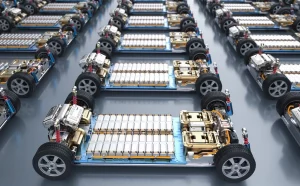
Image by: Yandex.com
In 2025, many automakers integrate LFP batteries into new EV models. Entry-level models from Tesla, BYD, and several Chinese startups use LFP to balance cost and safety. Tesla’s Model 3 Standard Range in some markets now ships with LFP packs, providing 250 miles of city driving. BYD’s Seal and Dolphin models use LFP to offer 260–300 miles at competitive prices.
Commercial EVs benefit strongly. Delivery vans from Ford and Rivian use LFP for predictable lifecycles. Electric buses in Europe adopt LFP for nighttime depot charging and safe daily cycles. As fast-charging networks expand, slightly lower range from LFP is less of a concern for commercial routes with fixed stops.
Tips for Consumers Choosing LFP-Powered EVs

Image by: Yandex.com
When shopping for an EV, consider these tips if you lean toward LFP models.
- Check Real-World Range: Manufacturer range estimates may not account for cold weather. Read owner forums for actual cold-weather performance.
- Review Thermal Management: A pack heater or liquid cooling improves LFP performance in low temperatures. Verify whether the automaker includes these features or offers them as options.
- Understand Warranty Terms: Longer cycle life promises often come with 8-year or 150,000-mile warranties. Compare warranty coverage on battery modules and retention levels.
- Factor in Charging Network: If you rely on fast chargers, a few extra minutes at charging stations can offset lower LFP pack density. Ensure your route aligns with available high-power chargers.
- Consider Total Cost of Ownership: Lower battery cost and longer lifespan reduce replacement and maintenance expenses. Include projected battery replacement costs in your 5- to 7-year ownership model.
Future Outlook for LFP Technology
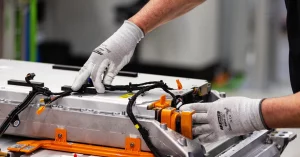
Image by: Yandex.com
LFP research continues to narrow the energy density gap. In 2025, labs report LFP cells exceeding 180 Wh/kg, thanks to improved electrode materials and nano-coatings. Solid-state separators promise faster charging and wider temperature tolerances.
Recycling will also advance. LFP pack recycling yields high recovery rates for iron and phosphate with minimal environmental impact. As recycling plants scale up, LFP’s supply chain footprint will shrink, boosting its appeal.
Standardization of modular pack designs will simplify integration across vehicle classes. More automakers are adopting LFP as a baseline chemistry and mixing nickel cells only in long-range trim levels. This tiered approach helps manufacturers balance safety, cost, and performance.
Relevant Table of LFP EV Models in 2025
| Model | Range (miles) | Battery Type | Warranty | Base Price (USD) |
|---|---|---|---|---|
| Tesla Model 3 SR | 250 | LFP | 8 years / 100,000 miles | $38,000 |
| BYD Seal | 300 | LFP | 8 years / 120,000 miles | $34,000 |
| Ford E-Transit | 210 | LFP | 8 years / 100,000 miles | $48,000 |
| NIO ET5 | 265 | LFP | 8 years / 120,000 miles | $44,000 |
| Rivian EDV Delivery | 120 | LFP | 8 years / 150,000 miles | $45,000 FSD |
Conclusion
LFP batteries are powering next-gen EVs in 2025 by delivering enhanced safety, lower costs, and long cycle life. While they trade some energy density and cold-weather range compared to nickel-based cells, ongoing improvements are narrowing this gap. Automakers deploy LFP in entry-level and commercial EVs to meet demand for affordable, reliable electric mobility. Consumers should weigh real-world range, thermal management, and warranty when choosing an LFP-powered model. As research and recycling efforts advance, LFP technology will play an even larger role in the global shift toward sustainable transportation.
Call-to-Action: Interested in driving a safer, more affordable EV? Explore LFP-powered models today to find the perfect fit for your budget and lifestyle!

